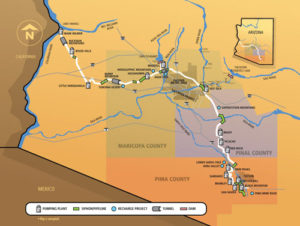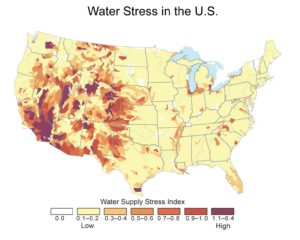I seemed to have things backward this summer, at least weather-wise! During the cold, wet spring I bundled up in Canada and Alaska. During the dog days of summer, I stripped down as much as I dare, a few miles from the Mexico border. I planned the Alaska trip, but my trip to New Mexico was a spontaneous decision. I wanted to retrieve my RV and get a jump start on my next adventures. Oh well. At this point I make my own rules and doing things backwards makes as much sense sometimes as doing things the normal way.
I have not been in the Southwest during the summer since the early 1980s. Southern New Mexico is a high desert at 2400 feet and is colder in the winter and cooler in the summer than Southern Arizona and the California deserts. Still, daytime temps hover in the high 90s and low 100s, not bad if you consider that Phoenix hit 120 degrees this summer. The mornings here are cool and lovely but by 10 AM I close up the RV and turn the AC and fan to high. By late afternoon, despite the AC, the inside of my little metal house can be hotter than outside. That is when the discomfort starts and it doesn’t really ease until a monsoon breeze blows in at night after a colorful sunset. The breeze may last 10 minutes or an hour. I turn off the AC, open the door and windows, and then hope for enough cooling to make sleep possible. Sometimes I get lucky and sleep through.
The creatures and critters make life here interesting. When that cooling starts at night, tarantulas come out for their nocturnal hunting. Tango would love to paw at them, but I keep him back with the leash. And, we had a coyote visit. The air never cooled down that night and I tossed around instead of sleeping. Tango barked and I looked out the door at a coyote sniffing for crumbs next to my outdoor table. “Shoo”, I whispered and he loped off. The creatures that worry me, however, are the ones I cannot see. I know that scorpions live in the cool darkness under the rocks and that they are stealthy night wanderers. They are small enough to enter a home or RV and have been known to hide out in shoes or bedding. To keep them out, I secure my screen door with a bungee cord hooked between the door handle and the stove and then stuff rolled towels along the floor. That should do it! Just in case, I keep my Hot Shot bug spray nearby. The bear spray is probably overkill for a scorpion.
People have not always lived in this immediate area. Early people lived scattered along the Rio Grande, which flows an hour east of here. That water allowed Native Americans to raise crops and otherwise survive the hot desert summer. But, the Rio Grande is a trickle now because of extensive irrigation upstream. The water table is perilously low and the water quality is declining. Already, some people in small New Mexico towns have water trucked in. Running out of water is a fate that may spread throughout the Southwest, including the big population centers like Albuquerque, Phoenix, and Tucson.
All of which leaves some us wondering why we are investing our time and resources here. The cost of living is cheap but much of the Chihuahua Desert is overgrazed and no longer anything to look at. Preserved tracts of desert at the State Parks offer enjoyable hiking but we are talking about small preserves. The desert we pass by every day is decimated.
High Country News, the best publication for issues about the west (and water is one of the biggies), just published an article about living here amid the water crisis. In the article, a young couple who moved to New Mexico is realizing that maybe they made the wrong decision. If you are interested in the Southwest and the challenges here, I highly suggest reading it, It is extensive and enlightening. And frightening.
I have to say, however, that running out of water is not a surprise. It has been an expected outcome since at least the 1970s when I went to school and lived in Tucson. Even then, everyone knew that the explosive population growth and crazy, irrigated agriculture would drain the water from the aquifers and the Colorado River, via the Central Arizona Project. The clock has been ticking down for a long time and the problem is now magnified by climate change. Yet, few changes have been made to address the sustainability of life here. Life just goes on.

Central AZ Project brings water from the Colorado River to the population centers and agricultural fields of AZ
So, I have to wonder, how this will play out in the next few decades? Phoenix, AZ and smaller desert towns, like Blythe, CA are routinely about 110 degrees in the summer, and sometimes reach 120 degrees. Will we see a doomsday scenario, where suddenly the temperatures can no longer sustain life and water dries up for good? Or, will people slowly migrate out while agriculture diminishes? We don’t really know for sure, although it wouldn’t be the first time that people had to migrate from an area due to environmental changes.
In the meantime, we seem to be in a waiting game, living like usual in an increasingly fragile- and roasting- ecosystem, watching the destruction as it occurs. Or worse, we deny what is happening around us and continue life as normal. Although Cormac McCarthy’s book “The Road” does not specify what causes the destruction of the earth, it does relate what life could be like when a few survivors wander aimlessly through a blackened landscape looking for food and water. Don’t read it or watch the movie version on a bad day!


Great article, Jane! Good to have you back.
Thanks! I don’t eat to be Debby Downer!